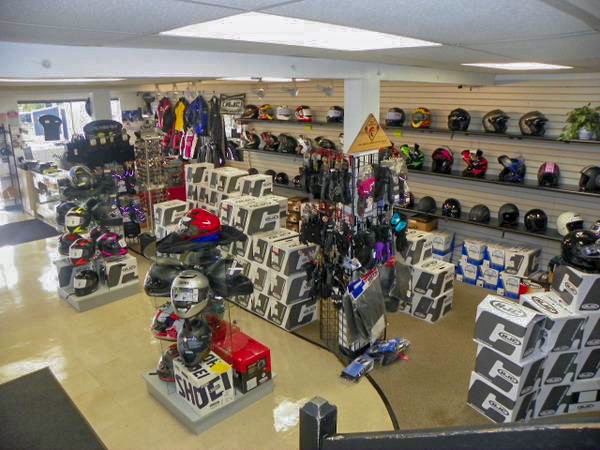Discover Competitive Rates on Motocross Parts NZ for Every Bike
Discover Competitive Rates on Motocross Parts NZ for Every Bike
Blog Article
Recognizing the Crucial Parts of a Motorbike: A Comprehensive Guide for Fanatics
For motorcycle fanatics aiming to elevate their riding experience and guarantee their bikes run efficiently, understanding the crucial components of a motorbike is critical. Each component, from the engine's elaborate functions to the crucial function of the stopping devices, not only affects performance however additionally safety and comfort. This guide will stroll via the fundamental parts that every biker must know with, enabling informed choices in both maintenance and prospective upgrades. As we begin this exploration, one must ask: exactly how does each element communicate to produce the seamless experience every lover looks for?
Engine Components

The camshaft plays a vital role in managing the timing of the engine's shutoffs, guaranteeing the specific opening and closing required for reliable fuel and air intake, as well as exhaust expulsion. This timing is essential to keeping optimal engine efficiency and efficiency. In addition, the carburetor or fuel injection system, relying on the motorcycle design, is accountable for blending air with gas in the appropriate proportion for burning.
The air conditioning system, either air or liquid-based, works to preserve the engine's temperature level within functional limits, avoiding getting too hot and making certain longevity - mx gear nz. Each element, thoroughly made and incorporated, adds to the seamless operation of the engine, defining the motorcycle's power outcome and general efficiency
Transmission System
Indispensable to the bike's functionality, the transmission system ensures efficient power transfer from the engine to the wheels. This system makes up a number of important elements, consisting of the clutch, transmission, and last drive, each playing an essential role in translating the engine's power into movement. The clutch, generally operated by a hand lever, offers to involve and disengage the engine from the transmission, enabling smooth gear changes and controlled acceleration.
The gearbox, often described as the transmission correct, has a collection of gears that motorcyclists can manually move through to adjust the bike's speed and torque result. These gears are organized in a series that enables the bike to increase smoothly and preserve ideal engine efficiency throughout various speeds. Many motorcycles use a consecutive gearbox, calling for the motorcyclist to shift gears in a predetermined order.
Braking Mechanisms
While understanding the transmission system is key to taking advantage of a bike's power, just as essential is the capability to control and quit that power efficiently, which is where stopping systems enter into play. Brakes are essential for security and performance, supplying the cyclist with the necessary control to navigate numerous terrains and problems. Generally, motorcycles feature 2 sorts of stopping systems: disc brakes and drum brakes.
Disc brakes are more widespread in modern-day motorbikes as a result of their exceptional performance. They contain a brake disc, caliper, and pads. When triggered, the caliper squeezes the brake pads against the rotating disc, converting kinetic energy into warm, consequently reducing the wheel. This system supplies much better warm dissipation, regular performance, and enhanced stopping power, particularly in damp problems.
Conversely, drum brakes, though less common, are still found in some motorcycles. They function by pressing brake footwear versus the internal surface area of a drum affixed to the wheel. While normally much less reliable in warmth dissipation and stopping power, drum brakes are less complex and extra cost-effective.
Understanding these stopping systems' subtleties allows motorcyclists to preserve their motorcycles appropriately and appreciate the engineering that guarantees secure and reliable stopping.
Suspension and Guiding
Suspension and steering motorcycle performance systems are vital elements that dramatically influence a motorbike's handling and ride comfort. The suspension system, consisting of forks at the front and shock absorbers at the back, soaks up roadway irregularities, improving security and control. Front forks, normally telescopic or inverted, compress and rebound to alleviate effects, while rear shock absorbers maintain tire call with the roadway, critical for grip and safety.
Steering, focused around the handlebars, links the cyclist to the motorcycle's directional control. The guiding head bearings make sure smooth operation, permitting exact maneuverability. Correct positioning and maintenance of these bearings are crucial for foreseeable guiding action and reducing rider fatigue.
The suspension's adjustability is another crucial facet; preload, damping, and rebound setups permit customization to fit various riding designs and problems. This flexibility is necessary for enhancing performance, whether navigating urban roads or tackling sturdy routes. Innovations like digital suspension systems use real-time changes, boosting experience high quality throughout varied terrains.

Electrical Equipments
After making sure a smooth and controlled adventure via efficient suspension and steering systems, focus turns to the electrical systems, a pivotal aspect of contemporary motorcycles. These systems play a vital function not just in starting the engine yet also in powering numerous parts that improve the capability and security of the bike.
At the heart of a bike's electric system is the battery, which stores electric power required for beginning the engine and powering supporting systems - motocross gear. The generator or generator, combined with the rectifier-regulator, guarantees the battery continues to be billed while the motorcycle is in procedure, transforming mechanical power into electric energy and keeping voltage degrees
The ignition system, an additional critical part, is liable for stiring up the air-fuel mixture in the engine's cylinders. Modern bikes commonly utilize a digital ignition system, offering greater effectiveness and integrity compared to conventional systems.
Illumination systems, including fronts lights, tail lights, and indications, are likewise important, making sure visibility and safety for the biker. Extra electronic components such as sensing units, control devices, and presents add to advanced attributes like fuel injection management, anti-lock braking systems (ABDOMINAL), and digital control panels, better enhancing the riding experience.
Verdict
A thorough understanding of a bike's crucial elements, consisting of the engine, transmission system, stopping devices, suspension, guiding, and electric systems, is crucial for enthusiasts intending to optimize safety, performance, and comfort. Mastery of these aspects allows for informed decisions regarding upkeep and upgrades, eventually improving the riding experience. By integrating this understanding, cyclists can ensure their motorbikes operate at peak effectiveness and dependability, consequently maximizing both enjoyment and budget riding jacket longevity of their vehicles.
For motorcycle fanatics looking to raise their riding experience and guarantee their bikes run smoothly, recognizing the important parts of a bike is extremely important.Indispensable to the motorbike's performance, the transmission system ensures efficient power transfer from the engine to the wheels.While understanding the transmission system is crucial to harnessing a motorbike's power, similarly important is the capability to control and quit that power successfully, which is where braking systems come into play. Normally, motorbikes include two types of stopping systems: disc brakes and drum brakes.
A thorough comprehension of a bike's important elements, consisting of the engine, transmission system, stopping devices, click now suspension, guiding, and electrical systems, is crucial for enthusiasts intending to maximize efficiency, safety, and convenience.
Report this page